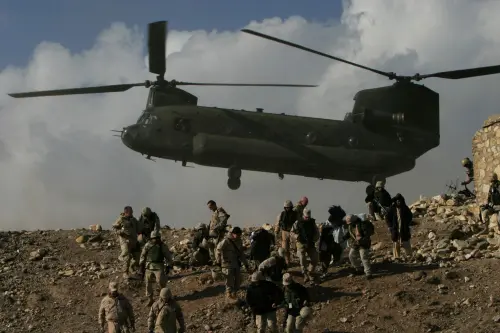From Bangkok to Bangui to Bogotá, people leave or are forced to flee their homes for various reasons. International legal and normative frameworks, as well as institutional mandates, tend to distinguish among different types of migrants. Those crossing international borders because of conflict or persecution are often considered to be refugees while those seeking jobs and better opportunities are seen as economic migrants. Thus, UNHCR is the guardian of the 1951 Refugee Convention and its protocols; but, there is no comparable convention or single UN agency dealing with economic migration. International migration receives considerable attention at the multilateral level, while migration and forced displacement that occur within a state’s borders – which are far more significant, numerically – largely remain the preserve of sovereign states.
Increasingly, however, these distinctions – between political and economic migrants, forced and voluntary migrants, internal and international migrants, and even legal and “irregular” migrants – belie reality. Most migrants, even those who are desperate, move for mixed motivations. Despite this, they are increasingly difficult to discern because they move together in “mixed flows.” Similarly, different migrant types often adopt broadly similar survival strategies or coping mechanisms. In addition, migrants can change status or category, often overnight, and sometimes intentionally – for example, in the case of a migrant who knowingly and deliberately overstays a visa, but often because of arbitrary changes in laws or policies on visas or work permits. Equally, individual migrants may simultaneously fit two (and sometimes more) pre-existing categories. A good example is the intersection between internal trafficking and internal displacement.
In this regard, the Second UN High-Level Dialogue on Migration and Development that took place last week in New York, October 3-4, 2013, is notable in that it recognized the growing gap between constructions and realities of migration, rather than reifying it. Even though the meeting was hosted by the organization that has structured its response to migration around traditional categories and brought together states that for the most part insist on the sovereignty of internal migration, considerable attention was paid to the phenomenon of “migrants in crisis.” Although there was no clear consensus on the definition of the term, it was used in reference to migrants who find themselves affected by crises while they are abroad. These migrants may be workers, asylum seekers, or refugees. The crises that affect them may be political, conflict-related, or the result of natural disasters. And often, the immediate impact upon the migrants is that they become displaced from the locations where they are living and working. In all these ways, the idea of migrants in crisis straddles traditional migration categories and distinctions.
Discussion of the issue at the High-Level Dialogue was notable for another reason, which is that it is so topical. My blog for Brookings last December, which considered the displacement of non-citizens as a new type of internal displacement, reviewed recent examples in Côte d’Ivoire, Libya, South Africa, and Thailand. Since then, the crisis in Syria has significantly affected migrants. According to the International Organization for Migration (IOM), there are at least 150,000 migrant workers in Syria, many of whom still require evacuation assistance, while 360,000 Palestinians and 94,000 Iraqi and other refugees need humanitarian support, and have been displaced within the country in large numbers.
In terms of how to respond to this new challenge, I proposed four recommendations in my earlier blog, and the High-Level Dialogue provides some indication of how far these may be expected to be realized; although, the fact that awareness of the issue is rising is, in itself, already significant. One recommendation was to articulate clearly the legal rights of displaced non-citizens. Of course, no such outcome should be expected from a dialogue. However, a model exists and has already been endorsed by the UN in other contexts, starting with the Guiding Principles on Internal Displacement and, more recently, the development of the Nansen Principles, which might also apply in this context. Second, there is a need for a predictable response by international organizations. In this regard, it is worth noting IOM’s development of a new Migration Crisis Operational Framework, unanimously adopted by its member states at the last IOM Council. A third recommendation was for states to develop a greater capacity to respond. In her speech at the High-Level Dialogue, Anne C. Richard, Assistant U.S. Secretary of State for Population, Refugees, and Migration, called for a state-led process examining the responsibilities of different actors to migrants in crisis situations, and reporting over the next one to two years. Such high-level support and a relatively quick turnaround bode well. A final recommendation was for a role for corporations to assist and evacuate their migrant employees. Here, regrettably, an otherwise surprisingly forward-looking and ambitious UN meeting reverted to type. The private sector was inadequately represented and unconvincingly incorporated in the debate.
Nonetheless, the time is ripe to recognize the particular needs – and devise concrete solutions – for migrants who are caught up in crises and may become internally displaced persons.
The Brookings Institution is committed to quality, independence, and impact.
We are supported by a diverse array of funders. In line with our values and policies, each Brookings publication represents the sole views of its author(s).



Commentary
Who Cares when Migrants Become Internally Displaced Persons?
October 8, 2013